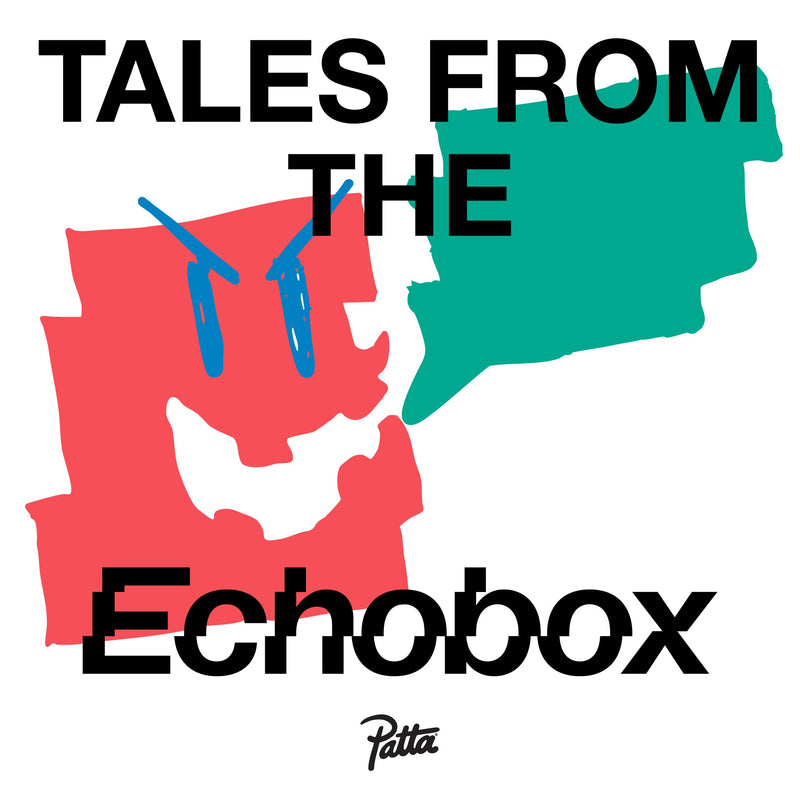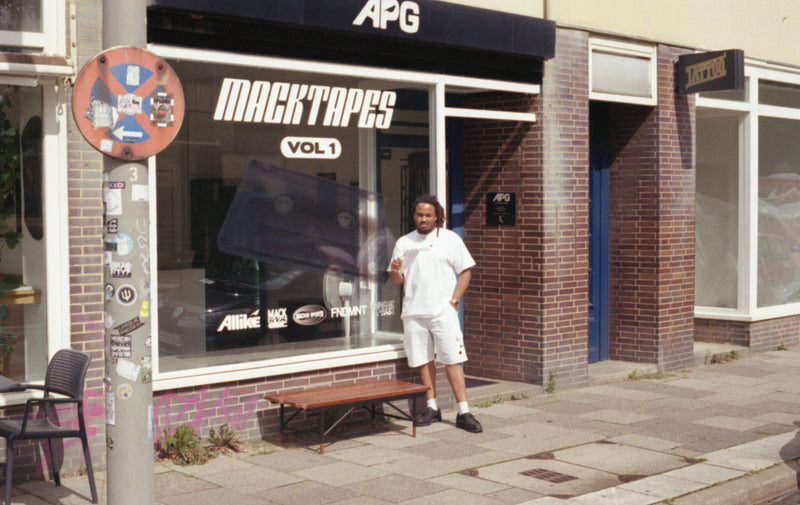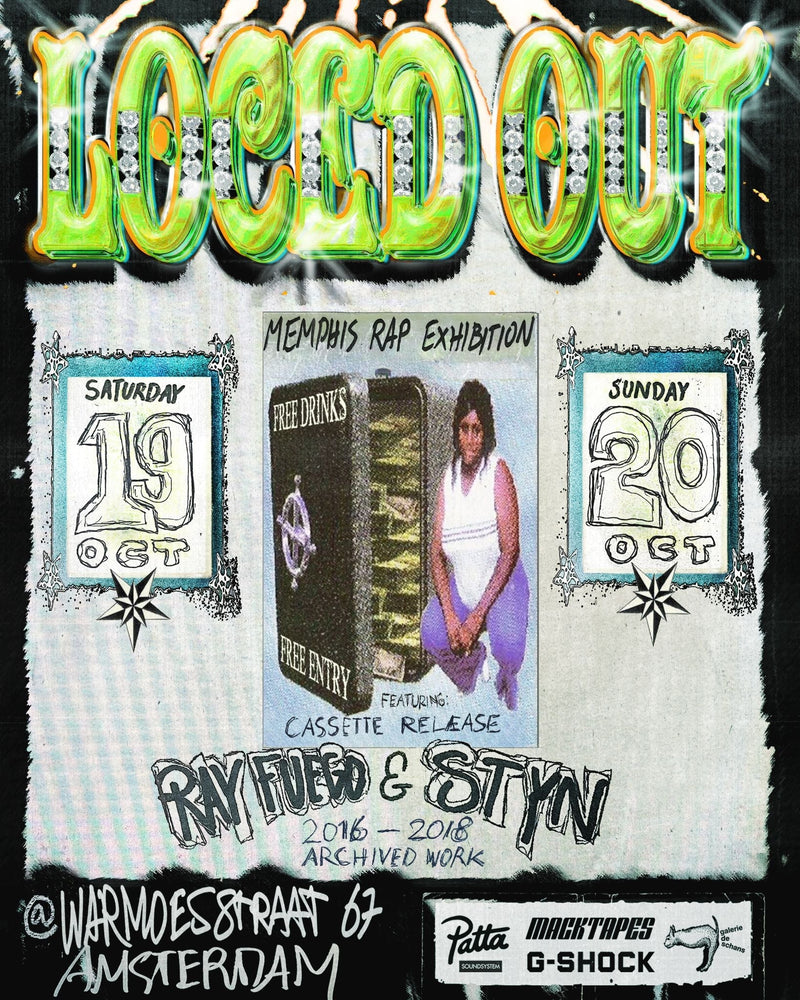
Wax Poetics: Braindance - Aphex Twin & Squarepusher
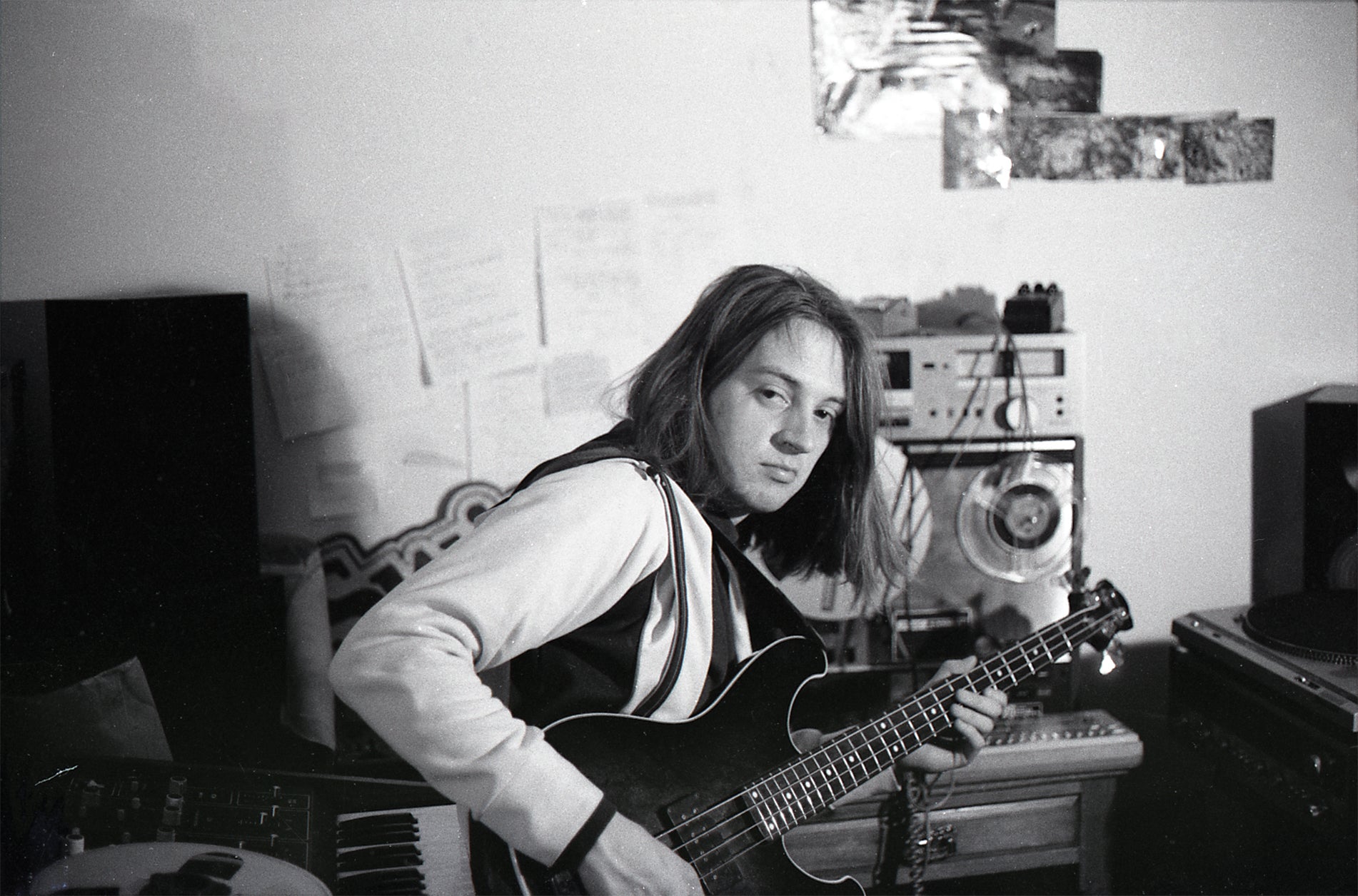
Young Tom Jenkinson aka Squarepusher. Photo courtesy of Warp Records.
Written by David Kane (originally published on waxpoetic.com)
With his musical moniker Aphex Twin and his indie label Rephlex, Richard James and his early signee Squarepusher ushered in a new direction of U.K. dance music that moved away from the ubiquitous acid house to a mind-bending concoction that still sounds futuristic decades later.
Chicago. Detroit. Berlin. Cornwall? The secluded English county isn’t usually considered among the hotbeds of dance-music culture. Located in the far west of Great Britain on a peninsula almost surrounded by the Atlantic Ocean. Cornwall is the most remote of English counties, two hundred miles from London, and home to barely half a million people.
Perhaps this isolation provided two DJs and friends—an Irishman named Richard David James (aka Aphex Twin, among numerous other aliases) and Grant Wilson-Claridge—with the time and motivation to start Rephlex in 1991. A record label that went on to alter the trajectory of electronic music.
 Richard James aka Aphex Twin, 1992. Photo by David Tonge/Getty Images.
Richard James aka Aphex Twin, 1992. Photo by David Tonge/Getty Images.
This coincided with the end of Margaret Thatcher’s reign as prime minister in the U.K. She held office for the Conservative Party for over a decade. A period that included the miners’ strikes, two major recessions, and unemployment levels not seen since the Great Depression. Cornwall was among the worst-hit areas in the country and continues to be among the most impoverished counties today.
“It was just out of boredom, really,” explains a young Aphex Twin to John Peel in his 1999 show Sounds of the Suburbs; and had he not got into music, he said, he would probably have had to work with his dad in the mines (long since closed).
Wilson-Claridge, a hip-hop fan with a growing interest in acid house, met James in the Bowgie nightclub in nearby Newquay in 1989. Playing alternate weeks, Wilson-Claridge was captivated by James’s DJ sets, which selected tracks from a broader range than usual, including a combination of early Detroit techno, American electro, breakbeat, hip-hop, and, most intriguing, his own bedroom productions.
Rephlex was founded on the idea of making music Wilson-Claridge, James, and his friends wanted to hear. A style of music that was almost impossible to find at the time, never mind in Cornwall.
With its origins in Chicago, acid house had become ingrained into British rave culture. According to an archive from the once-thriving IDM List—a fevered mailing list that began as a place for Aphex Twin and Rephlex fans to connect and discuss music—Wilson-Claridge declared a two-part manifesto where Rephlex would create “Innovation in the dynamics of Acid” and demonstrate “that British dance music can be entirely original.”
By this point, a community of like-minded labels and artists began forming around the west country and the twin forces of Rephlex and Aphex Twin. Local artists included Luke Vibert, with his skittish explorations across acid and hip-hop, and Tom Middleton and Mark Pritchard (the latter two finding success as the ambient-led Global Communication and Jedi Nights, until George Lucas threatened litigation proceedings).
Scene staples included the record-shop-turned-label Mighty Force, an essential spot for impromptu shows and DJs curious to hear more of this unique blend of ambient, acid, breakbeat, techno, and jungle that had, at this point, no precise name. Tom Middleton described it over email to me as follows: “Rebellious, exciting, creative, high energy times (pre-Criminal Justice act of ’94). [With] weekends spent raving in local clubs, or beach after-parties.”
Tom Middleton was an early collaborator of Aphex Twin, coproducing “En Trance to Exit” from his first-ever record, the Analogue Bubblebath EP, released in 1991. “I took the mixtape Richard made for me of his music to Mighty Force,” says Middleton. “Mark [Darby, label founder] loved it, they ‘signed’ the Analogue Bubblebath EP, and the rest is history.”

Richard James aka Aphex Twin, 1996. Photo by Martyn Goodacre/Getty Images.
Though far from fully formed, the Analogue Bubblebath EP hinted at James’s mercurial talent. Hypnotic acid claps bounce against waves of warm percussion. It is precise yet melodic, complex, and fun.
But Richard D. James had no desire to put the record out. Mark Darby told the story to Record Collector magazine in 2018; he had booked him to play a rave at the Academy in nearby Plymouth. “He had done some acid, and after he had played, he was sitting backstage completely off his tits,” said Darby. “I said, ‘Richard, we really, really need to put this record out. Please. Just agree to do it please.’ Tom was there as well, saying, ‘Richard, you really have to do it.’ I think it was because he was really tripped out and he just wanted us to fuck off, so he said, ‘Yes.’ I think if he had not done that trip that night there may have never been any Aphex Twin.”
Aside from the music, a unique attitude was also beginning to emerge. It was a very punk sense of irreverence and a poke at the pomposity of electronic musicians who took themselves too seriously. This included the use of song titles in Welsh and gobbledygook, albums ironically titled, like Expert Knob Twiddlers, and kitsch cover art that played on British pop culture tropes like BBC interstitials from the ’70s and Now That’s What I Call Music compilations. To use a Commonwealth expression, Aphex and the crew were tremendous piss-takers.
The excitement and anarchic energy of this new music soon caught the ears of A&Rs further afield: Ninja Tune and Mo’ Wax in London, Warp in Sheffield, and R&S in Belgium.
In 1992, Rephlex relocated to London, and both the totemic artist and label were prolific. Richard put out at least six EPs under various aliases (including AFX, Caustic Window, and Power Pil) and released his debut album, the groundbreaking Selected Ambient Works 85–92 (via Apollo/R&S). It’s a moving, lushly textured album that has received countless praise since; Pitchfork named it the best IDM album of all time in 2017.
Yet, it’s arguably another record that James put out that same year—the Digeridoo EP as The Aphex Twin, on R&S—that captured the spirit of the nascent scene that had coalesced around him. James spent days working in the studio to match the timbre of a didgeridoo on the title track in an attempt to make a song that would clear the dance floor of persistent ravers from the after-parties held at barns and warehouses. Ironically, it was among the first Aphex Twin tracks to be picked up by national radio.

Richard James aka Aphex Twin, circa 2000. Photo by Andy Willsher/Redferns/Getty Images.
This caught the ear of a younger musician, also living outside the London bubble, looking to explore the frontiers of electronic music. I spoke with Tom Jenkinson, aka Squarepusher, on a Zoom call (dialing in under the name “HappyUser”), and as he explains, his first memory of Richard was “Digeridoo.” “Colin Faver played it on KISS FM,” Jenkinson recalls. “In itself, [it’s] a pretty iconic piece, but what I also remember is Colin Faver talking about [Richard] and describing him as some sort of recluse in Cornwall who built his own keyboards. And to me, having that prior interest in electronics circuits, that idea of a person applying that electronic knowledge not just about instrumentation but how they were actually built so you could control how the sounds are made, it’s fascinating above and beyond the music. That story, for me, just resonated immediately. ”
That same year, Warp Records—a label beginning its ascendency into iconic status—released the compilation album Artificial Intelligence. The artwork, by Phil Wolstenholme, features a cozy living-room scene complete with a retro-futuristic sound system, record collection, a reclining cyborg blowing perfect smoke rings into the air from a substantial joint, and vinyl copies of Pink Floyd’s Dark Side of the Moon and Kraftwerk’s Autobahn by the feet of the robot together with the likely nod-and-a-wink tagline “Electronic listening music from Warp” on the album cover.
The first in a series of releases—artist albums followed from the likes of Polygon Window (yet another Richard D. James alias), second-wave Detroit techno (via-Ilford, Essex) of B12, and Autechre, architects of an austere digital universe, before finishing with a second compilation in ’94—the music explored the outer dimensions of electronic music, pushing further away from the acid-house continuum, birthing the term—intelligent dance music, or IDM. Syncopation for the synapses, if you will.
It was and remains a highly divisive label in dance music, with James telling the website Perfect Sound Forever, “I just think it’s really funny to have terms like that. It’s basically saying ‘this is intelligent and everything else is stupid.’ It’s really nasty to everyone else’s music.” Rephlex instead preferred the term “braindance,” probably in an attempt to put themselves in a box of their choosing. IDM, braindance, call it what you like, but 1992 was an inflection point for the music and scene.
Squarepusher’s studio, U.K., 2011. Photo by Richard Ecclestone/Redferns.
Before creating his electronic-music moniker Squarepusher, Tom Jenkinson’s formative years were spent “playing in bands in Essex. Playing bass in whatever group would have me, blues, rock,” he says. “I was listening to progressive rock tapes from bands like King Crimson, Yes. For me, I had no qualms about copying anything I could. For me, learning was the same thing as copying. I’m not trying to be original. I don’t care about being my own sound; I just want to know how those people do that stuff that I find fascinating. Whether it’s a set of notes, it’s a run, an amplifier setup, a sonic thing, or even an attitude thing. All of that stuff is the backdrop [to Squarepusher].”
After playing the prog-rock circuit, Jenkinson gravitated towards the rave scene by the early ’90s: “It was an incredible time for music in this country. It was really diverse as well, so many ideas flying around, so anarchic, and so energetic.”
Tom Jenkinson (aka Squarepusher) playing bass. Photo courtesy of Warp Records.
And Jenkinson is effusive in his praise about one act in particular: “For me, Shut Up and Dance is the absolute keystone to all of this. The label and the act. They are the keystone where soul and funk and hip-hop met rave. And then breakbeat and hardcore developed from it.
“They would use samples from Derrick May; they would use samples from everywhere,” he continues. “It was such an eclectic attitude they had. For me, they are legends and one of the most criminally underrated and underexposed acts in the history of dance music.
“There was stuff where the aesthetic was more clearly electronic and less based on samples, stuff like LFO,” says Jenkinson. “The track ‘LFO’ by LFO gave this very elaborate mental picture. Normally, if I enjoy a piece of music, it produces some sort of visceral, visual reaction.”
These musical inspirations—from jazz, funk, prog-rock, hip-hop, breakbeat, and then jungle and drum & bass—all laid the foundations to what we now know as the Squarepusher sound. The solitary explorer in a mountain of sound.
Yet, it wasn’t a straightforward journey from fine art student to electronic music auteur, as Tom Jenkinson explains, “I had actually put out two records prior to that [first album, 1996’s Feed Me Weird Things]. One was done with a friend, and one was done [with] a guy who used to run a fanzine in London, but those were completely homespun, selling them out the back of a transit [van]-type operation. I’ll never forget the day I was sitting at home, and the distributor van pulled up outside my house and gave me back most [of] the records, as he couldn’t sell them. It was a bit of a knock; I put my heart and soul into it. But it was a failure.”
It was a difficult lesson for Tom but one that taught him early on about the harsh realities of the music business, where the experience “unwittingly built a protective shield against the comings and goings of the music industry, what’s cool, what’s not, and trends,” he says. “That built a wall for me because it’s founded on deep disappointment. I’m going to carry on and make the stuff for my entertainment. And it’s what I’m still doing now.” This helped “consolidate the spirit of Feed Me Weird Things.”
The earliest tracks are from 1994, and given the influence of jungle music on Jenkinson, it’s no wonder what equipment is “the center of the record’s sound. You’re primarily hearing breaks being played back from the Akai S950 sampler,” he explains of one of the more affordable samplers that were popular in the U.K. at the time. “There are all these little tricks that you’re trying to play to squeeze more sounds into a device like that, which gives it a certain kind of aesthetic roughness, [which] is part of the charm.”

Squarepusher playing live. Photo by Gael Van Weyenbergh, courtesy of Warp Records.
“The thing about the S950, which differentiated it from the S900, is the time stretch, where you take a sound and change its duration but don’t change its pitch,” he continues. “By doing so, you impart a different type of spectral characteristic. It adds a sort of pitched element to the sound. That crops up, for example, on ‘The Swifty,’ if you listen to some of the percussion sounds on that, they derive from the ‘Funky Drummer’ break, but they are extrapolated quite a long way using time stretching.”
By Jenkinson’s admission, Feed Me Weird Things isn’t a consistent sound and wasn’t originally intended as an album. Jenkinson met Richard D. James after performing at the George Robey in Finsbury Park, north London. They struck up a friendship and agreed to put the album out on Rephlex.
He sent Aphex Twin forty tracks on a DAT compilation; James compiled it into an album of twelve songs. But what the record lacks in consistency is more than made up for in adventure and ingenuity. It’s a roller-coaster journey through sound. From the majestic bass play on “Squarepusher Theme” through to birthing the frenetic new (sub)genre of drill & bass in “Theme From Ernest Borgnine.”

Expert knob twiddler Tom Jenkinson aka Squarepusher. Photo courtesy of Warp Records.
Reissued by Warp earlier this summer, twenty-five years after its original release on Rephlex, Feed Me Weird Things still sounds startlingly original, a daring fusion of nimble jazz guitar licks and mutated breakbeats. Perhaps Richard D. James himself put it best, writing in the liner notes (the only time he has done this for another artist) of the original release: “The Squarepusher is someone who wonders what the holes of a flute sound like without the flute. Sound like sound never sounded before, Richard Rodgers and Julie Andrews gave us the Sound of music, John Cage and Simon and Garfunkel gave us the Sound of silence and now the Squarepusher gives us the SOUND of SOUND. —PRichard.D.Jams”
By the time the record was ready for release, Jenkinson had already received offers from three labels—Ninja Tune, R&S, and Warp—to put out more music aided by larger distribution networks and more significant marketing muscle. “All those record label shenanigans were happening at the tail end of 1995,” he says. “That was mainly inspired by a couple of 12-inch records I did for Spymania and also the remix I did for DJ Food on Ninja.”
As DJ Strictly Kev, from DJ Food, recalls to me of the Refried Food remix project: “What he turned in was beyond our wildest dreams, an instant classic, that crazed production, and lush bass breakdown, the theremin, and weird ‘toothbrush’ sounds, [it was] just perfect. I was a fan from the first EP he did on Spymania and pushed Ninja to try to sign him. [He] helped kick-start a whole new strand of drum & bass.”
Jenkinson was interested in the offer by Ninja Tune. “They’re a lovely bunch. I wouldn’t say that about R&S,” he says. “I didn’t have that connection with them at all. It was very abrupt, basically. It was a contract on a single piece of A4 [paper], that if I would have signed, I would have been done for. It would have killed my career stone dead in terms of legal piff. With Warp, it was just that sense of it feeling right. It’s going to be hard to freak these guys out. I felt like, with Ninja Tune, ‘This could all go nicely if I do this kind of stuff,’ but when I start hitting them with musique concrète and brutal noise attacks, I didn’t picture that being so much up their street.”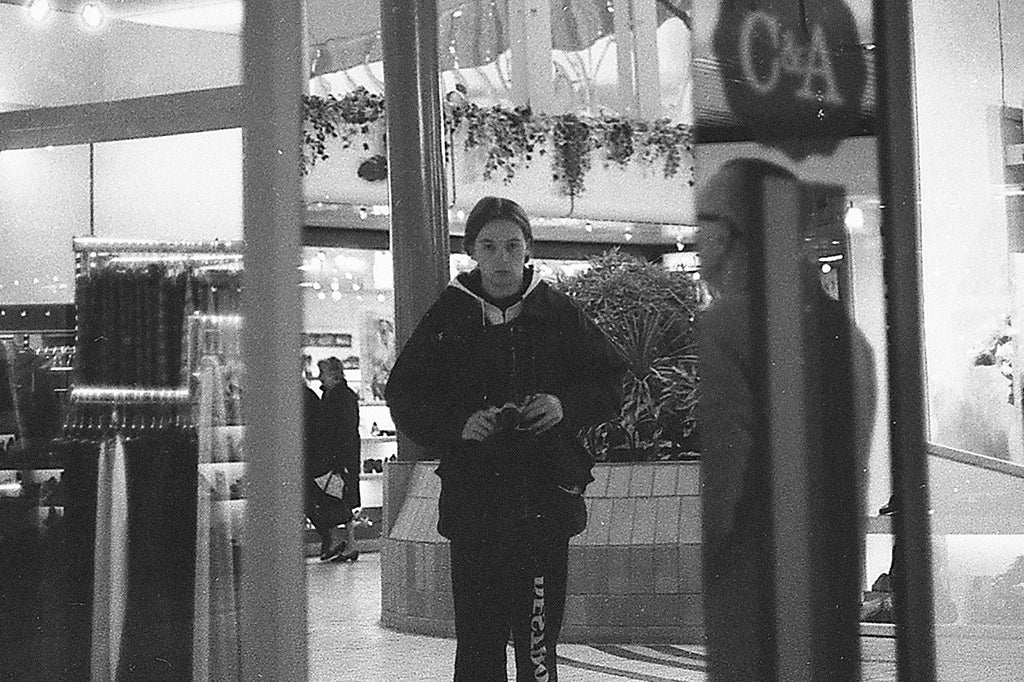
Tom Jenkinson aka Squarepusher, circa 1990s. Photo courtesy of Warp Records.
It had been barely five years since the first Rephlex release, yet the state of the nation couldn’t be more different. A young Tony Blair was the leader of the opposition; New Labour was on the horizon. And with the success of the 1996 film Trainspotting and acts like the Chemical Brothers—whose 1995 debut album Exit Planet Dust would sell one million copies—rave had gone mainstream. There was optimism, opportunity, and money.
Indirectly, this climate provided the conditions for Jenkinson’s consistent music experimentation (including the opportunity to collaborate with a seventy-eight-fingered guitar-playing robot) at a scale that wouldn’t have been possible just a few years earlier, or even twenty-five years later. Since then, Jenkinson has released a further fourteen albums on Warp and many more singles and EPs. It has proven to be a fruitful relationship for both sides.
The comparisons to Aphex Twin are inevitable, but whereas Richard’s music is informed by classical composition, Squarepusher is all about the funk, even if it’s not there in conventional form, thanks to his beloved bass. As DJ Strictly Kev put it to me, “Along with Luke Vibert as Plug and later Richard D. James as AFX, they seemed to be in playful competition with one another for a while; but Tom seemed to be on his own path, almost sprinting fully formed from nowhere, continuously progressing with each release.”
The production techniques of these artists may appear recondite to all but the few gifted musicians who know how to (re)make the machines, let alone the mind-blowing music. Yet, above all, these artists and this fertile period in time was a triumph of community. An interdependence of the music makers and those passionate enough to support the sound by launching labels, parties, and record shops.
It’s worth noting that this esoteric sound, with the music of Aphex Twin and Squarepusher in particular, has influenced the most ubiquitous artists. Kanye West took a very liberal sample of “Avril 14th” from Aphex Twin’s Drukqs on “Blame Game” (contrary to what Mr. West’s camp might say) from his 2010 magnum opus My Beautiful Dark Twisted Fantasy.
While Andre 3000 described Squarepusher as the “new version” of Kraftwerk in a 2006 interview with the Guardian newspaper, and rumors of a collaboration abounded, Jenkinson was coy on the matter with me: “We’re still in touch, and he’s a great dude, [a collaboration] will be wonderful.”
And it’s not only in music that the “braindance” sound has had a profound impact, but also in the emergent technologies that power the wellness economy. Mindfulness app Calm has more than four million subscribers and is valued at a cool two billion dollars—and Tom Middleton is responsible for the sound design.
Middleton’s studio experiments have turned full circle; the anecdotal, therapeutic effects of rave experiences have been combined with evidence-based research. And the results have generated “really useful ‘functional’ music in a real lab to help people with challenges like sleep and anxiety,” Middleton says. “Now I’m going deep to better understand the science behind how we perceive music and how best to use this knowledge in an even more responsible and socially impactful way.”
Squarepusher, 2021. Photo by Donald Milne.
